Battle hardened with charm
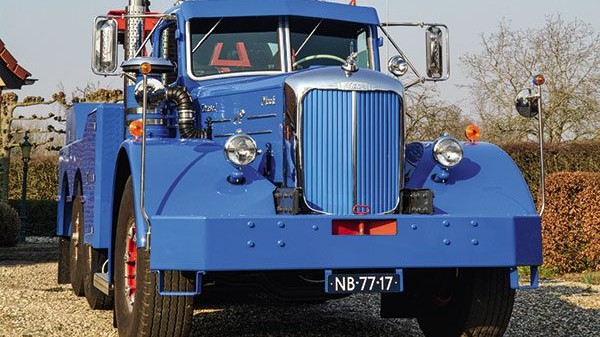
Mack trucks made an essential contribution to winning the Second World War. But after the liberation, the Bulldog also played an important role in Europe. Thanks to rolling stock from the U.S. army dump, European road transport operators got up and running again fairly quickly.
After the Second World War, hundreds of British and American army trucks found their way to civilian entrepreneurs. These old wagons had all but disappeared from the road in about 1960, and only heavy haulage and breakdown companies continued to use ex-U.S. Army equipment – for decades. The 1943 Mack LMSW is a fine example. There were 664 heavy 6×4 chassis fitted with the Gar Wood crane built for the British and Canadian armed forces.
Over the years, quite a few enthusiasts have restored a Mack army truck. Often these were old crane trucks still rusting away within the grounds of a towing company. Frans Rongen, from Oirlo in the Netherlands, is the proud owner of a 1943 Mack LMSW 6×4 crane truck. It took the 65-year-old enthusiast no less than 15 years to restore the vehicle. He did virtually all the work on the mechanics and superstructure.
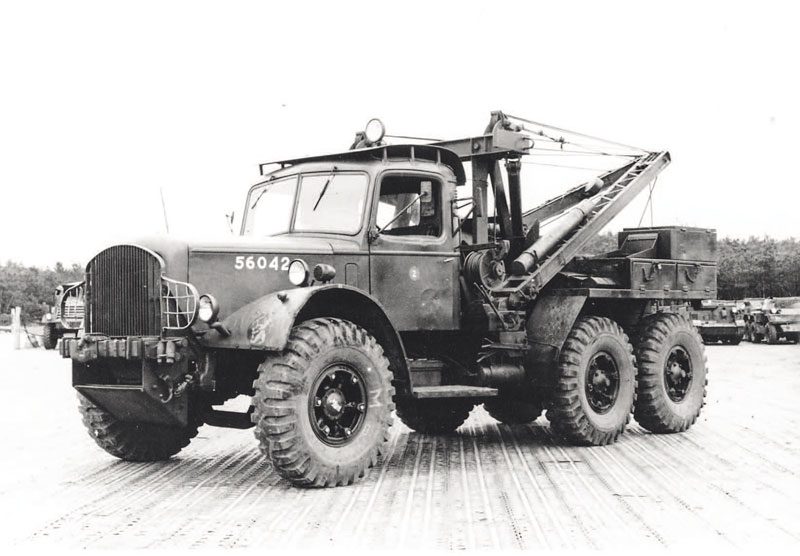
Since 1985, Frans has worked as a service mechanic for Still Intern Transport, a manufacturer of forklifts, stackers and reach trucks, but his experience working on trucks goes back to his youth.
“In military service, I was trained as a technical specialist. I tinkered with all the rolling stock of the military, from Leopard tanks to FTF heavy-haulage tractors. I also obtained my driving licence in the army. Between 1974 and 1979, I was often stationed in Germany. Later, I started working at a DAF dealer in Kleve, Germany. In addition to mechanical work, I was responsible for the towing service there. Back in the Netherlands, I worked as a mechanic for different transport companies.”
Frans was 30 when he got into the vintage truck business. He explains: “I really liked tinkering with ‘old stuff’ – not only cars but also tractors. In the 1990s, I started restoring seriously. My first big project was a 1962 Ford Country Super Six tractor. Since then, I have worked on all sorts of wagons.”
Frans has not only the technical knowledge for the job but also the equipment and space. Eventually, though, he wanted to have a classic truck of his own. But something like a DAF or Scania didn’t appeal because “there are already enough of those”, Frans says.
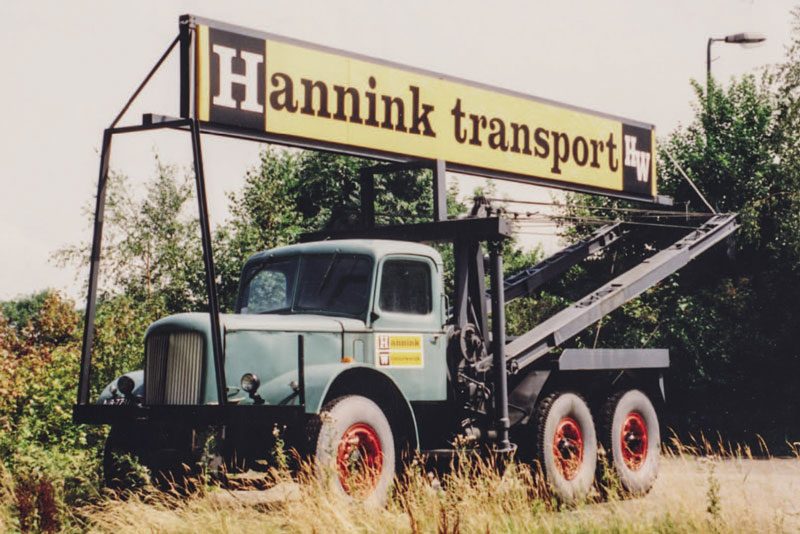
“I was tipped off about the Mack about 20 years ago, sitting as an eye-catcher outside haulage operator Hannink in Winterswijk. They had taken over the ex-army wrecker in 1961 from construction company Kok in Haarlem. The latter had bought it in 1953 from the army dump. To unload large pipes from barges, they had extended the Gar Wood ‘twin boom’ masts of the crane. After that, Hannink also used it for several years for towing duties.”
Frans says that at first sight, the old Bulldog seemed to be in reasonable condition, but mechanically everything was in bad shape. And so, after buying it, he put it in a corner for a while.
“About 15 years ago, I started dismantling it bit by bit, taking it apart to the last bolt. Thereupon, I completely overhauled the gearbox and cardan, as well as the PTO of the winch and crane. They had taken quite a beating during the former lifting operations – the chassis was even bent. The truck had been lying on its side once, looking at the damage.
“I also renewed the spring hands and the central axle of the tandem because the latter was broken on the left side. After the chassis was completely stripped, everything was blasted and metal-sprayed.”
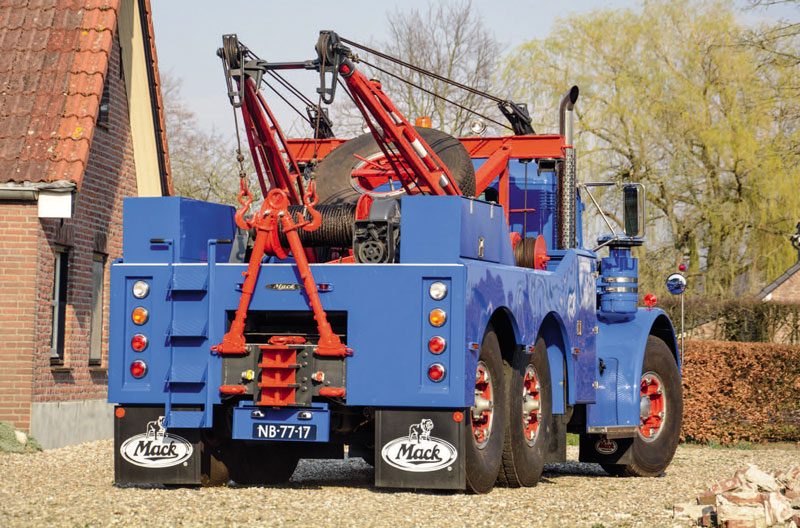
The Mack LMSW was factory-equipped with a six-cylinder, 160hp EP gasoline engine. “That ran well but was far too thirsty,” says Frans. “So, I installed a six-cylinder 1959 Mack Thermodyne diesel that I overhauled myself. I also fitted new main and connecting rod bearings, piston rings and valve guides. Staff at the Mack Museum in the U.S. gave me contacts from whom I could get the genuine parts. Some body parts, such as the lower left and right sides of the hood, I made myself, and did the same with the fenders and the bumper. Fortunately, I can do a lot in my shop!”
The only job outsourced to a professional company was the paint. Although the blue is not a metallic but a 1950s RAL colour, it still shines nicely. Because the original cab and parts of the bonnet were quite affected by rust, Frans decided to look for a donor.
“I found a bare cab from a civilian L-series in the U.S. From the two cabs, I then made one. The floor plate is also my own work. To meet the inspection requirements, new safety glass was fitted all around. Because the dashboard had partially rotted away, I made new sheet metal parts for it. The cab was newly upholstered and so were the seats. They are old seats, but nice and compact and well-sprung. The steering wheel is huge, but that is welcome because it lacks power steering.
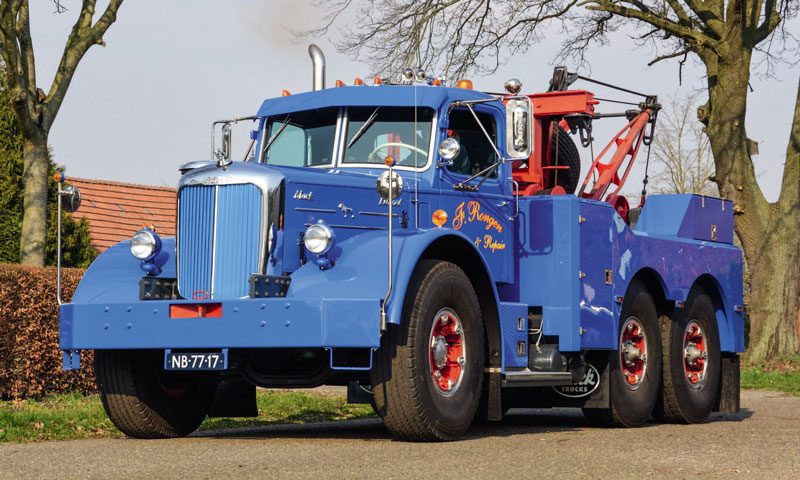
“By the way, the gearbox with high and low reduction is also unsynchronised. Remarkably, the original cab still had almost all the instruments and switches in it, although the glass of some gauges was faded. I was lucky to find an original mileage meter at a classic vehicle meeting. And I got hold of a 1960s double air horn with low and high tone. Such details make the rig special!”
The prior extension to the Gar Wood crane was done in a rather primitive way. They were crooked, too, so Frans partly cut them up. “But I did use the base. The whole body, with the lockers, fenders, back end and such, is new. That was a big job and took me almost two years to finish. I also overhauled the 30-ton Gar Wood winch and moved it a bit on the chassis. The old crane was replaced with an original Holmes Twin Boom Wrecker model CA8P, with an eight-ton towing capacity each. I modified the PTO for the crane and winch accordingly, which was necessary because the Holmes is placed further back on the chassis.”
The Mack stands sturdily on large Trilex wheels with a 1400×20 tyre size – still the original rubber but retreaded.
“In the old days, American trucks rarely had brakes on the front axle,” adds Frans. “But the LMSW does because it was mandatory for a crane truck at the time. The handbrake is also extra-heavy duty and has huge claws. When winching, it holds the wrecker perfectly in place.”
The unit is also equipped with outriggers on the rear drive shaft, and everything on the crane is in working order. The arms can swing left and right to make winching 100m away possible.
And, of course, everything is built to last. Overlooking the blue Bulldog is impossible. And if that happens, the sound of its big diesel will surely grab attention.
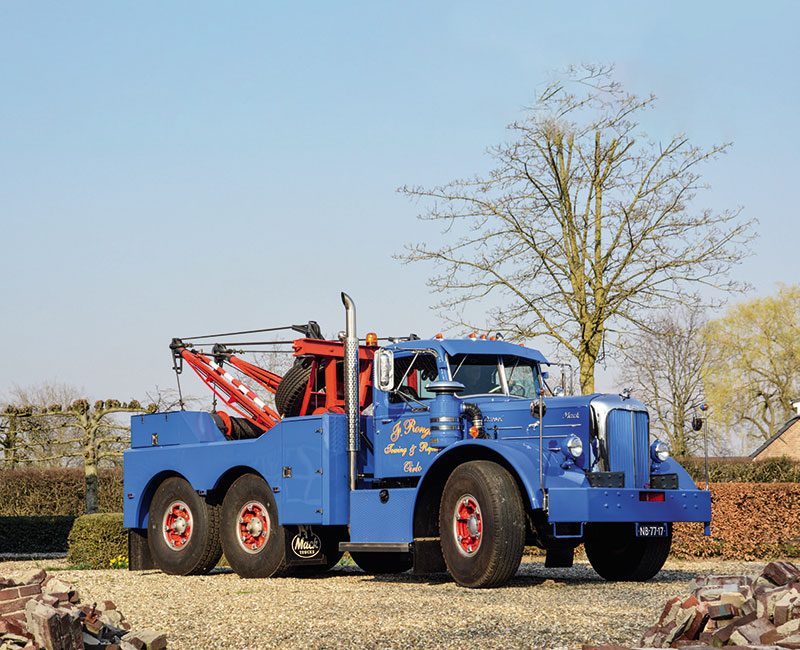
Read more
Winter warriors
0 Comments12 Minutes
From our travels
0 Comments1 Minute
Maximum nostalgia
0 Comments5 Minutes
Meeting Volvo’s VNL
0 Comments13 Minutes









